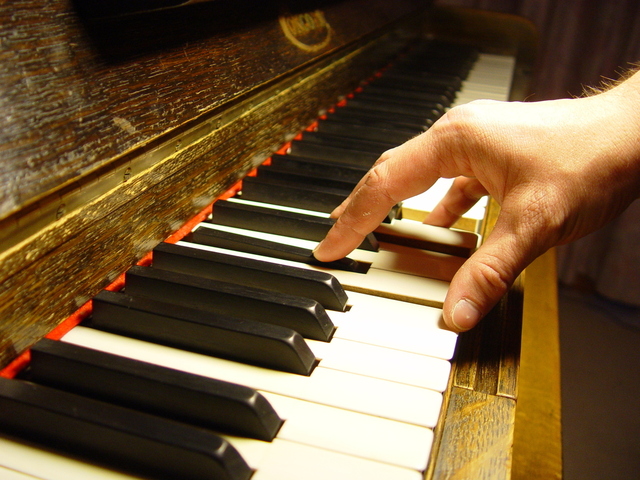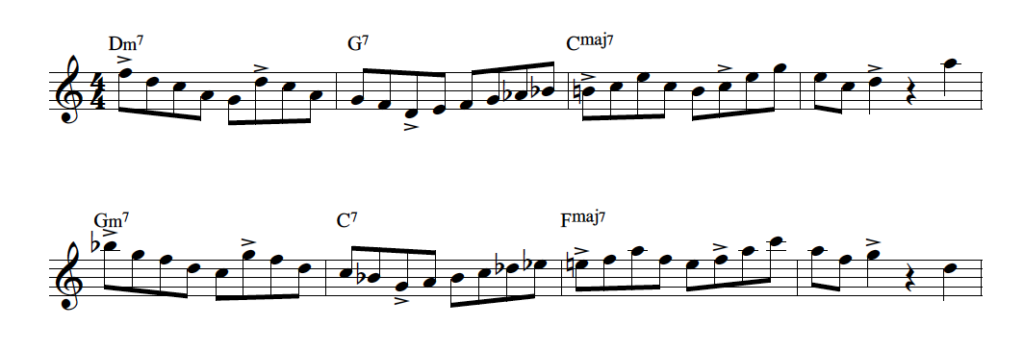
To improve what you do as a musician, you must pay attention to things in sometimes extraordinary ways.
This is especially true if you aim to change any habits you might have of misdirected effort and energy. To find more ease and efficiency in your body as you play your instrument, you sometimes have to call things into question.
But consciously increasing the awareness of your postural and movement habits as you play your instrument can be a double-edged sword.
On the one hand, if you never become aware of these habits, you’re never going to be free of them (thereby limiting your growth as a musician).
On the other hand, focusing too much on these habits while you’re playing can actually make things worse rather than better.
So to improve what you do, you need to balance these two (sometimes opposing) forces.
When musicians come to me for Alexander Technique lessons, there is always some imbalance between “lack of awareness” and “hyper-awareness”. My job is to help my client explore, discover and cultivate the kind of dynamic (“dynamic”, as in always able to change) attention that will yield the best results.
Here’s a little experiment I sometimes use with the musicians I coach to get them aware, not only of themselves and their postural and movement habits, but of the quality of their own self awareness:
Experiment One-Scanning for Misdirected Effort/Tension/Energy
As you play your instrument, pay attention to a particular part of your body. Do this several times, each time changing the anatomical location of where you’re looking. While drawing your attention to each part, observe and ask yourself these three questions:
1 “What do I notice?”
2 “Am I free and available for movement here, or am I holding on more than I need to?”
3 “What could I let go of to play more easily?”
Don’t worry about being “right or wrong” as you ask these questions. Just observe. You can organize your observations toward the following areas of your body, starting and stopping each time you change the awareness of where it is you’re looking:
- Head/jaw/neck
- Shoulders/chest/upper back area
- Arms/hands/fingers
- Lower back/abdominal area
- Buttocks and hips (front and rear of your pelvic area)
- Knees/upper legs
- Lower legs/ankles/feet
What do you notice when you do this experiment?
You might have noticed some unnecessary effort (i.e., “stiffness”, “tightness”, etc.) in one or more areas of your body. And that awareness can be a very good thing, enabling the possibility of change and improvement.
It’s also quite possible that in “looking for” this misdirected effort that you actually increased it.
(Take a moment to think about that.)
Too often when you look for “trouble”, you not only find it, but typically amplify it. (There are myriad reasons why that is with respect to how your neuromuscular systems function.)
So “looking” for it helps you become aware of what needs to change, but it doesn’t necessarily improve your coordination in that moment.
Okay, lets look at another experiment:
Experiment Two-Noticing Ease
This time as you play your instrument, pay attention to yourself in a more “global” (whole body) way, instead of the “segmented” way you did in the first experiment.
But this time, don’t “look for” anything in particular. Instead, as you bring your body gently and flexibly into your attention, simply take note of places in your body where things are already easy and free. Notice where you are already mobile, already in good balance, already dynamic, already poised…
In essence, notice the ease that is already there inside you.
That ease might be anywhere…your shoulders, hands, legs, back….in your breathing….
No matter how “tense” you might think you are when you’re playing, there is always some ease going on somewhere. It’s just a matter of being available in your attention to notice it.
To be clear, you’re not searching for something that is not there, nor are you trying to “create” ease. (Trying to do so would most likely invite unwanted/misdirected effort.)
Instead, you’re just opening your awareness to what is already happening unconsciously on its own.
And what do you do with this acknowledgment of ease?
Nothing at all. Don’t form any agenda with what you take note of.
Just let it be.
So what happens when you notice what is already “right” (easy, mobile, freely available, light) inside your body as you play your instrument?
How does this contrast to the quality in your body when you are “looking for” misdirected effort/tension/energy?
(Take some time to seriously ponder these questions.)
You just might find (as I do) that when you “notice ease” in your body, that this ease migrates and expands to other parts of your body. It’s kind of like a “virtuous circle”, perpetuating itself to inform you of the possibility of ease in the rest of your entire organism.
When I’m performing on saxophone, I never “look for trouble” in my body. Because if I do, things become worse rather than better.
But the instant something moves toward “wrong” with myself (in my body) as I’m playing, it comes easily into my attention, and I’m able to gently say “no” to it. (In Alexander Technique parlance, that’s known as “conscious inhibition”.) This is a skill that I cherish, and is one that helps me play with greater ease, efficiency, consistency and satisfaction.
It is a skill that has been (and continues to be) cultivated by “scanning” myself while practicing (Experiment One).
But I had to learn early on as a student of the Alexander Technique to balance the “looking for trouble” part with “noticing ease” as it applies to playing my instrument.
And as I’ve said above, the “looking for it” part can be a useful tool in the practice room when used wisely. (The “looking for it part” is a good place to visit from time to time, but not a great place to live all the time.)
Nowadays, for sure, I notice ease more readily and naturally. And that ability to notice what is already there, what is already helping me, continues to enhance my coordination and skill as a musician.
And I hope it can enhance yours, too! So give this two-part experiment a go. See what you discover. Be kind with yourself, (and curious, persistent and patient, too). And please always feel free to contact me if you need help. Helping musicians do what they do better is my passion!



